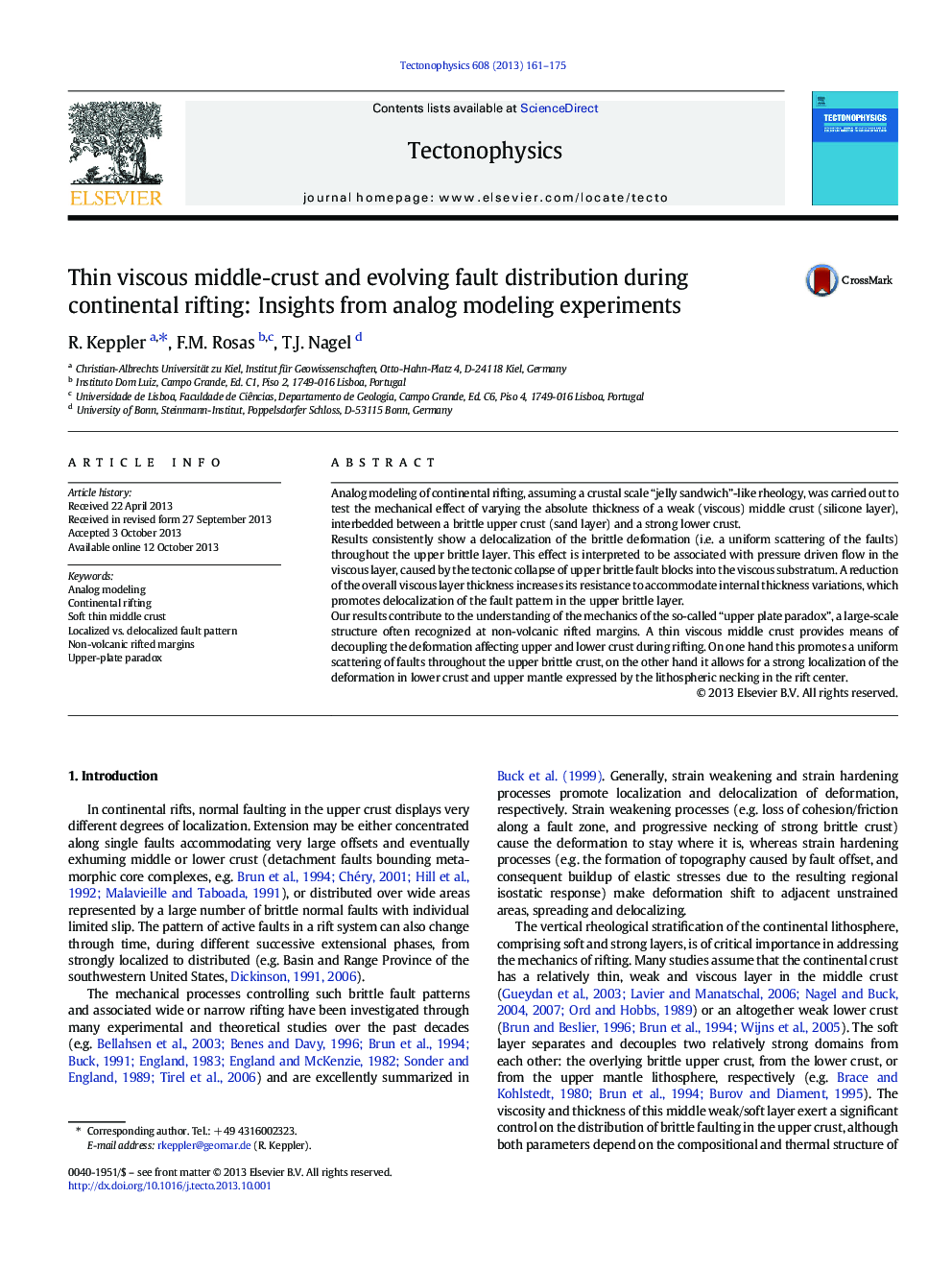| Article ID | Journal | Published Year | Pages | File Type |
|---|---|---|---|---|
| 6433932 | Tectonophysics | 2013 | 15 Pages |
â¢Analog modeling of continental rifting⢓Jelly sandwich”-like crustal rheological structureâ¢Middle crust thinning and delocalization of brittle fault patternâ¢Tectonic configuration of non-volcanic rifted margins⢓Upper plate paradox” and decoupling effect of viscous middle crust
Analog modeling of continental rifting, assuming a crustal scale “jelly sandwich”-like rheology, was carried out to test the mechanical effect of varying the absolute thickness of a weak (viscous) middle crust (silicone layer), interbedded between a brittle upper crust (sand layer) and a strong lower crust.Results consistently show a delocalization of the brittle deformation (i.e. a uniform scattering of the faults) throughout the upper brittle layer. This effect is interpreted to be associated with pressure driven flow in the viscous layer, caused by the tectonic collapse of upper brittle fault blocks into the viscous substratum. A reduction of the overall viscous layer thickness increases its resistance to accommodate internal thickness variations, which promotes delocalization of the fault pattern in the upper brittle layer.Our results contribute to the understanding of the mechanics of the so-called “upper plate paradox”, a large-scale structure often recognized at non-volcanic rifted margins. A thin viscous middle crust provides means of decoupling the deformation affecting upper and lower crust during rifting. On one hand this promotes a uniform scattering of faults throughout the upper brittle crust, on the other hand it allows for a strong localization of the deformation in lower crust and upper mantle expressed by the lithospheric necking in the rift center.
